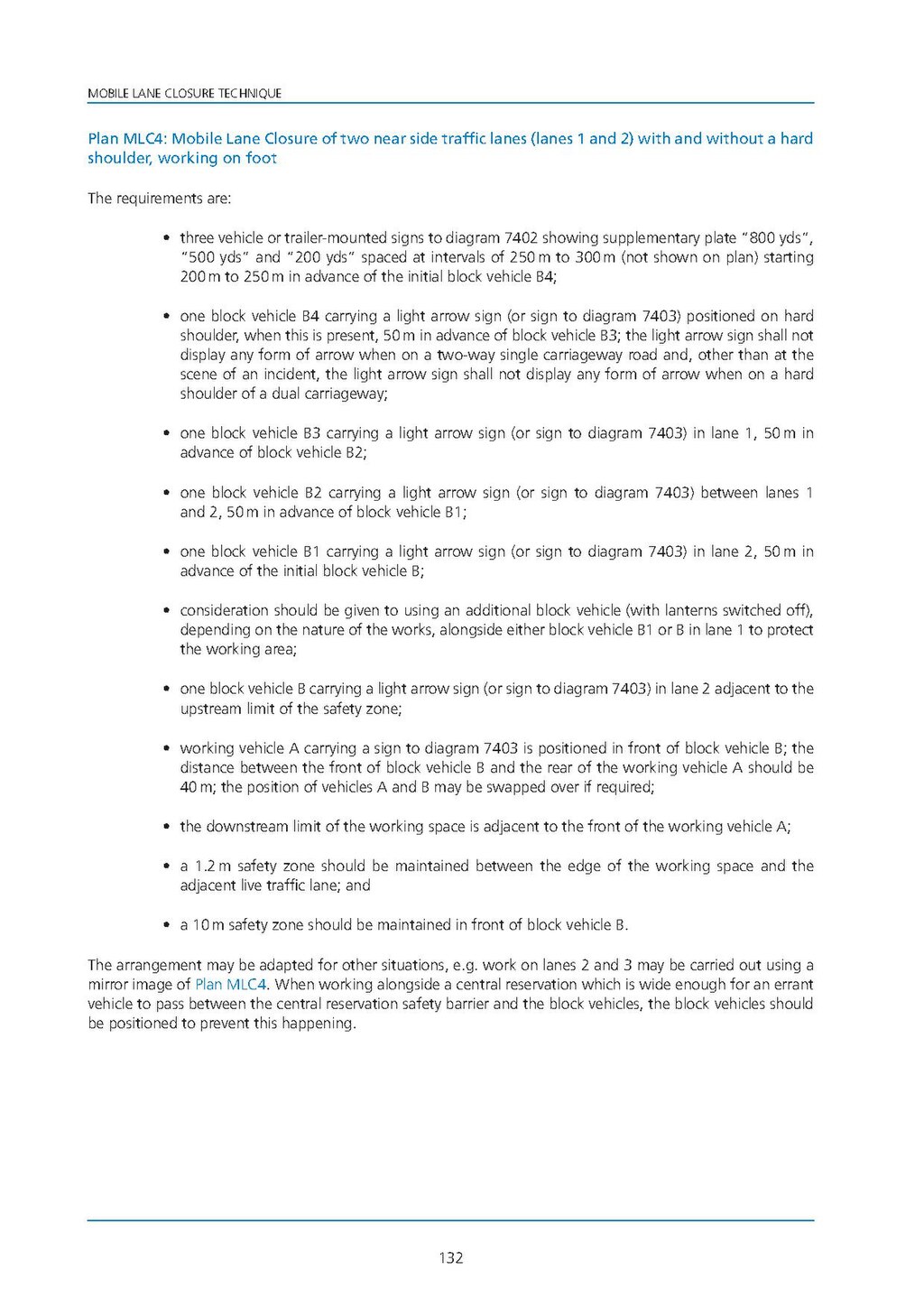MOBILE LANE CLOSURE TECHNIQUE
Plan MLC4: Mobile Lane Closure of two near side traffic lanes (lanes 1 and 2) with and without a hard shoulder, working on foot
The requirements are:
- three vehicle or trailer-mounted signs to diagram 7402 showing supplementary plate "800 yds", "500 yds" and "200 yds" spaced at intervals of 250 m to 300 m (not shown on plan) starting 200 m to 250 m in advance of the initial block vehicle B4;
- one block vehicle B4 carrying a light arrow sign (or sign to diagram 7403) positioned on hard shoulder, when this is present, 50 m in advance of block vehicle B3; the light arrow sign shall not display any form of arrow when on a two-way single carriageway road and, other than at the scene of an incident, the light arrow sign shall not display any form of arrow when on a hard shoulder of a dual carriageway;
- one block vehicle B3 carrying a light arrow sign (or sign to diagram 7403) in lane 1, 50 m in advance of block vehicle B2;
- one block vehicle B2 carrying a light arrow sign (or sign to diagram 7403) between lanes 1 and 2, 50 m in advance of block vehicle B1;
- one block vehicle B1 carrying a light arrow sign (or sign to diagram 7403) in lane 2, 50 m in advance of the initial block vehicle B;
- consideration should be given to using an additional block vehicle (with lanterns switched off), depending on the nature of the works, alongside either block vehicle B1 or B in lane 1 to protect the working area;
- one block vehicle B carrying a light arrow sign (or sign to diagram 7403) in lane 2 adjacent to the upstream limit of the safety zone;
- working vehicle A carrying a sign to diagram 7403 is positioned in front of block vehicle B; the distance between the front of block vehicle B and the rear of the working vehicle A should be 40 m; the position of vehicles A and B may be swapped over if required;
- the downstream limit of the working space is adjacent to the front of the working vehicle A;
- a 1.2 m safety zone should be maintained between the edge of the working space and the adjacent live traffic lane; and
- a 10 m safety zone should be maintained in front of block vehicle B.
The arrangement may be adapted for other situations, e.g. work on lanes 2 and 3 may be carried out using a mirror image of Plan MLC4. When working alongside a central reservation which is wide enough for an errant vehicle to pass between the central reservation safety barrier and the block vehicles, the block vehicles should be positioned to prevent this happening.
132
